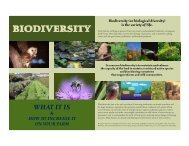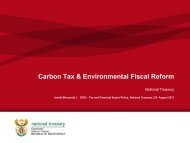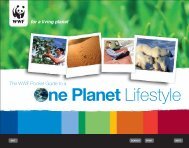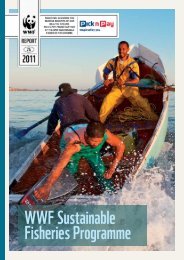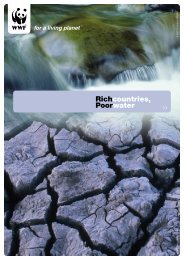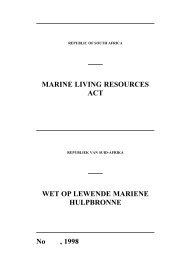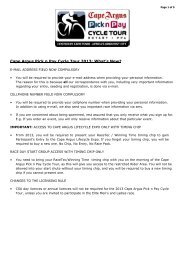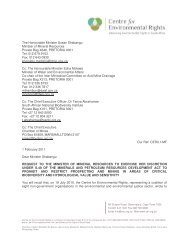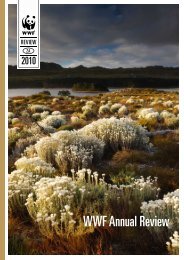State of Management of South Africaââ¬â¢s ... - WWF South Africa
State of Management of South Africaââ¬â¢s ... - WWF South Africa
State of Management of South Africaââ¬â¢s ... - WWF South Africa
- No tags were found...
Create successful ePaper yourself
Turn your PDF publications into a flip-book with our unique Google optimized e-Paper software.
STATE OF MANAGEMENT OF SOUTH AFRICA’S MARINE PROTECTED AREAS5.2 WEST COAST NATIONAL PARK MPAs5.2.1 ContextThe West Coast National Park (WCNP) MPAs are <strong>of</strong> global and national significance. Themarine habitats represented by the five MPAs include exposed and sheltered sandy beachesand rocky shores, a lagoon, mud flats, salt marshes, subtidal reefs and sandy benthos.Malgas, Jutten and Marcus Islands support breeding colonies <strong>of</strong> several IUCN Red-listseabird species and are thus important for seabird conservation. Sixteen mile beach issituated on the west side <strong>of</strong> the peninsula and is representative <strong>of</strong> exposed west coast sandybeaches. Langebaan Lagoon, the only true lagoon system in <strong>South</strong> <strong>Africa</strong>, supports a richbird life and is a declared Ramsar Site (a wetland <strong>of</strong> international importance). The lagoonalso has a rich diversity <strong>of</strong> marine invertebrates and seaweeds and a total <strong>of</strong> 34 fish specieshave been recorded (Hanekom et al. 2009).The lagoon is also significant for traditional subsistence net fishers and ten subsistence netfishing permits, two West Coast rock lobster permits and one white mussel harvesting permithave been allocated to local fishers (Sunde and Isaacs 2008). However, there areapproximately 40 remaining traditional fishers without permits whose basic household foodsecurity is not sufficiently provided for through recreational linefishing in the multi-use zone(Sunde and Isaacs 2008), and there is pressure placed on management to allocate a furthersix permits. In addition, Langebaan has become a popular holiday destination and the lagoonattracts recreational activities such as power boating, sailing, water skiing, kitesurfing, andrecreational fishing. Furthermore the islands and lagoon are unique sites for research andeducation.The marine environment is threatened by: Increasing pressure by tourists and recreational users; poaching; non-compliance <strong>of</strong> recreational and subsistence fishers; the development <strong>of</strong> Langebaan town; the expansion <strong>of</strong> Saldanha Bay harbour; beach erosion; pollution (land and vessel source), and mariculture.5.2.2 Legal frameworkLangebaan Lagoon and sixteen mile beach are part <strong>of</strong> the West Coast National Park and aredeclared under the NEM:PAA. The Lagoon, Sixteen mile beach and its adjacent <strong>of</strong>fshorearea and the marine areas surround the three islands were declared as five MPAs under theMLRA in 2000 (GN 21948). The regulations provided a zonation pattern for the lagoon andpermitted the catching <strong>of</strong> line fish from a boat in the Sixteen Mile Beach MPA and the threePg 48



